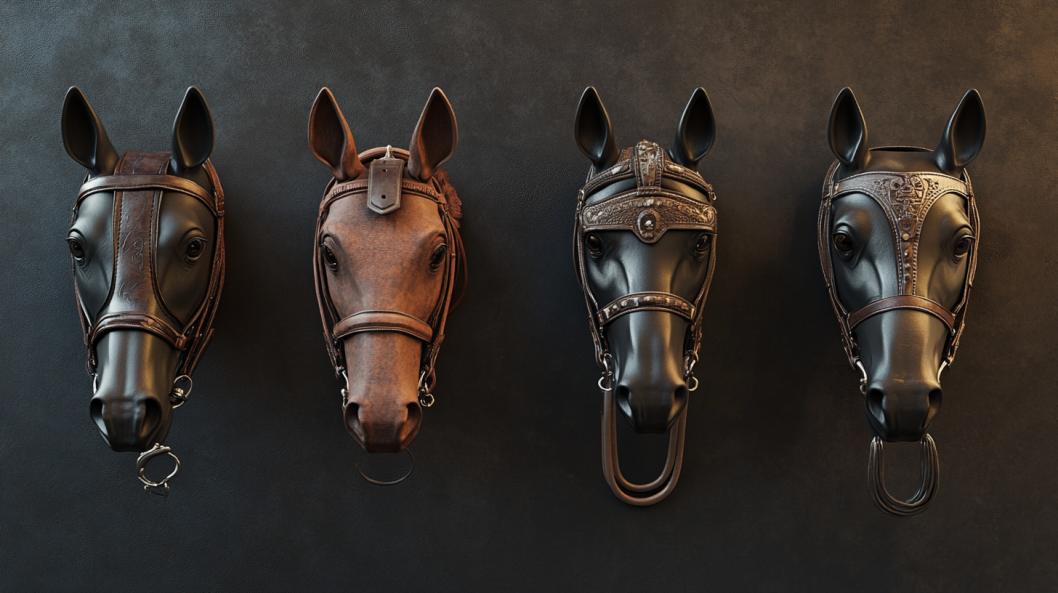When it comes to horseback riding, the bridle is one of the most crucial pieces of tack. It plays a key role in communication between rider and horse, and choosing the right bridle can make a significant difference in comfort and performance. Selecting the best bridle for your horse can be daunting with so many options.
I believe that choosing the right bridle is not just about functionality but also about enhancing the overall comfort and communication between horse and rider. A well-chosen bridle can transform your riding experience, making it more harmonious and effective. In this post, we’ll compare several types of bridles to help you make an informed decision.
1. English Bridle
The English bridle is the most common type used in disciplines such as dressage, show jumping, and eventing. It typically features a single crown piece, a browband, a noseband, and cheekpieces. The key characteristics are:
- Versatility: Suitable for various English riding disciplines.
- Comfort: Designed to distribute pressure evenly across the horse’s head.
- Adjustment: Allows fine-tuning to fit different head shapes and sizes.
Best For: Riders looking for a traditional and versatile bridle for English riding.
2. Western Bridle
Western bridles are a staple in rodeo and Western riding disciplines. They usually come with a bit but can also be used with a bitless option. Common features include:
- Sturdiness: Often made from durable leather, suited for heavy-duty use.
- Simplicity: Fewer adjustments than English bridles, focusing on functionality.
- Design Variations: Includes options like the hackamore, which is bitless and applies pressure to the nose and chin.
Best For: Riders who participate in Western disciplines or prefer a more rugged and straightforward bridle.
3. Dressage Bridle
The dressage bridle is a specific type of English bridle designed for dressage competitions. It has a few distinguishing features:
- Thin Reins: Often equipped with narrower reins to provide more subtle communication.
- Anatomical Fit: Designed to accommodate the horse’s head shape for optimal comfort during extended periods of wear.
- High-Quality Leather: Typically crafted from premium leather to match the formality of dressage attire.
Best For: Dressage riders who need a bridle that meets competition standards and offers high levels of comfort and precision.
4. Bitless Bridle
Bitless bridles are gaining popularity for their humane approach and reduced discomfort for the horse. They include:
- Hackamores: Use leverage and pressure on the nose and chin.
- Sidepulls: Apply pressure directly to the horse’s nose, usually less intense than a hackamore.
- Cross-under: Distributes pressure across the nose and poll, offering more refined control.
Best For: Riders who prefer a bitless option due to personal preference, horse comfort, or specific training goals.
5. Hybrid Bridle
Hybrid bridles combine elements of both English and Western designs, offering a customizable experience. Features may include:
- Interchangeable Parts: Allows for swapping out different components like bits and reins.
- Versatility: Suitable for a variety of riding styles and disciplines.
- Innovative Designs: Often incorporates modern materials and ergonomic designs for enhanced comfort.
Best For: Riders who want the flexibility to switch between styles or disciplines without changing the entire bridle.
Choosing the Right Bridle
When deciding which bridle is best for your horse, consider the following factors:
- Discipline: Different bridles are suited for specific riding styles.
- Horse’s Comfort: Look for a bridle that fits well and doesn’t cause discomfort.
- Budget: Quality varies, so choose a bridle that fits your budget while meeting your needs.
- Personal Preference: Your riding style and comfort level with different bridles will influence your choice.
In my opinion, investing in the right bridle is more than just a practical decision—it’s a reflection of your commitment to your horse’s well-being and performance. The right bridle can transform your interactions with your horse, enhancing communication and comfort. As you explore your options, remember that the best bridle for you aligns with your riding goals and respects your horse’s needs.





